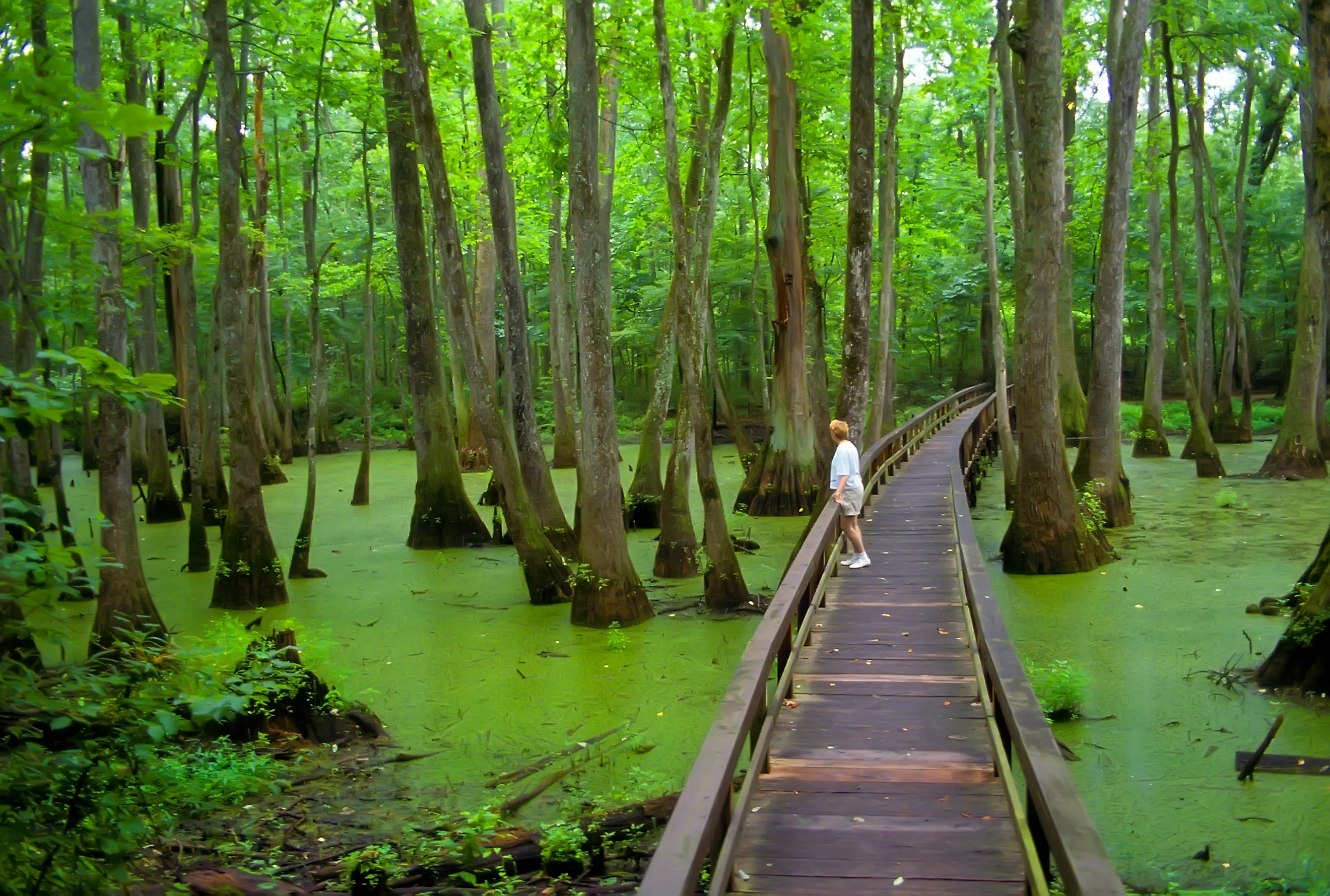
5 National & State Parks In Mississippi You Have To Visit
Although best known for its Delta blues heritage, its elegant antebellum architecture, and that unmatchable Southern hospitality, there’s a whole other side to the state of Mississippi that’s worth getting to know: its stunning natural beauty. Featuring diverse ecosystems ranging from ancient rock formations in the foothills of the Appalachians to its Gulf Coast barrier islands, these scenic locations are a paradise for outdoor enthusiasts and nature lovers alike.
There’s nowhere better to experience this rich bounty of beauty than in the Magnolia State's best national and state parks. From the chance to see black bears to alligators and sea turtles in their natural habitats, and from ancient Native American ceremonial grounds to Civil War battlefields, Mississippi's best national and state parks deliver no end of adventures.
Tishomingo State Park
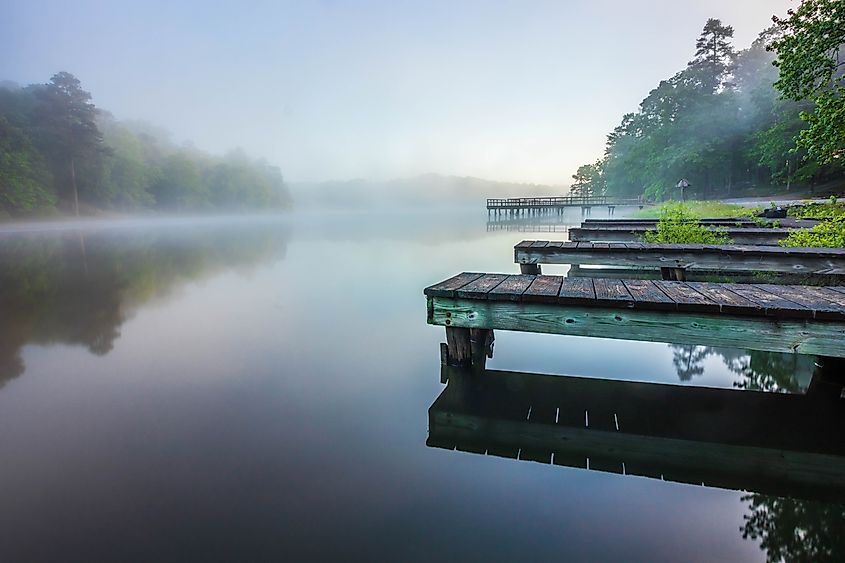
Positioned in the Appalachian Mountain foothills near the town after which it’s named, Tishomingo State Park sits along the Natchez Trace Parkway at milepost 304. Here, Bear Creek has carved a dramatic gorge through ancient rock formations dating back 350 million years. Unique to Mississippi, these exposed Paleozoic rocks create a spectacular landscape of moss-covered boulders, natural rock shelters, and steep ravines that look like they belong in places like North Carolina or Tennessee.
For hikers, the park's 13-mile trail system ranks among the most challenging (and scenic) in Mississippi. Popular options include the Bear Creek Outcroppings Trail with its massive sandstone formations and narrow passages between towering rocks. Pedestrian bridges span the creek at several points, adding a dash of adventure. Prefer rock climbing? The park's limestone and sandstone faces feature routes ranging from beginner-friendly to expert-level challenges, with 40 documented climbing routes with names like "Gunslinger" and "Cherokee Roof."

Bear Creek is also popular for its canoeing and kayaking experiences, particularly in spring when water levels run high. The historic Tishomingo Swinging Bridge, built in 1939 and stretching 186 feet in length, is a must-see for its superb views of the surrounding parkland.
When To Visit: April-May are ideal for the park’s abundance of wildflowers and comfortable temperatures, while October-November are all about the fall colors and ideal climbing conditions.
Gulf Islands National Seashore (Mississippi District)
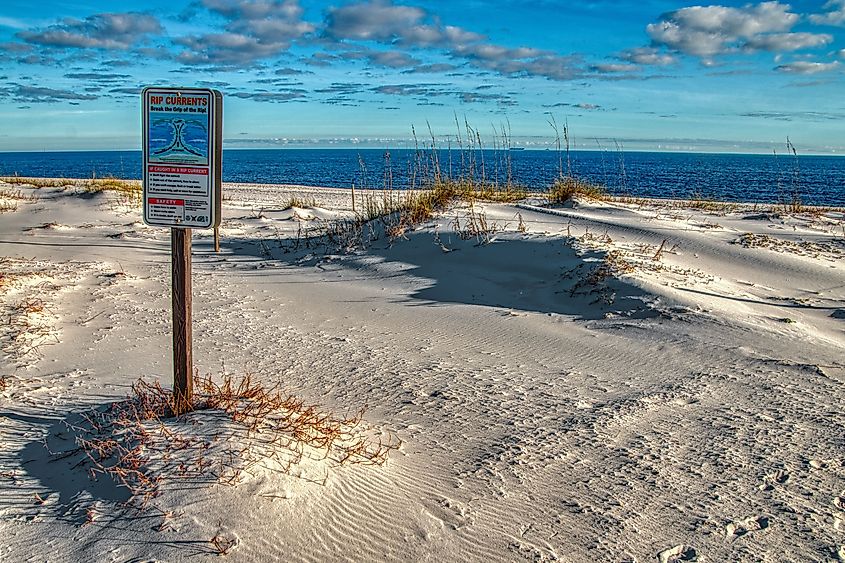
Mississippi’s portion of the Gulf Islands National Seashore protects a chain of barrier islands that not only serve as the state's first line of defense against hurricanes, but also provide a critical habitat for wildlife. The seashore includes some areas that are accessible only by boat, such as parts of Petit Bois and Cat Islands. The mainland districts at Davis Bayou and the William M. Colmer Visitor Center in Ocean Springs are the easiest to access and to explore this unique coastal ecosystem.
It's also the last undeveloped coastal wilderness in the northern Gulf Coast region, uninhabited except for a period by artist Walter Anderson who documented Horn Island’s wildlife in thousands of drawings and watercolors. Boasting 14 miles of unspoiled beaches and maritime forest, the island's interior lagoons attract thousands of wintering waterfowl, while its beaches serve as nesting grounds for black skimmers and loggerhead sea turtles.
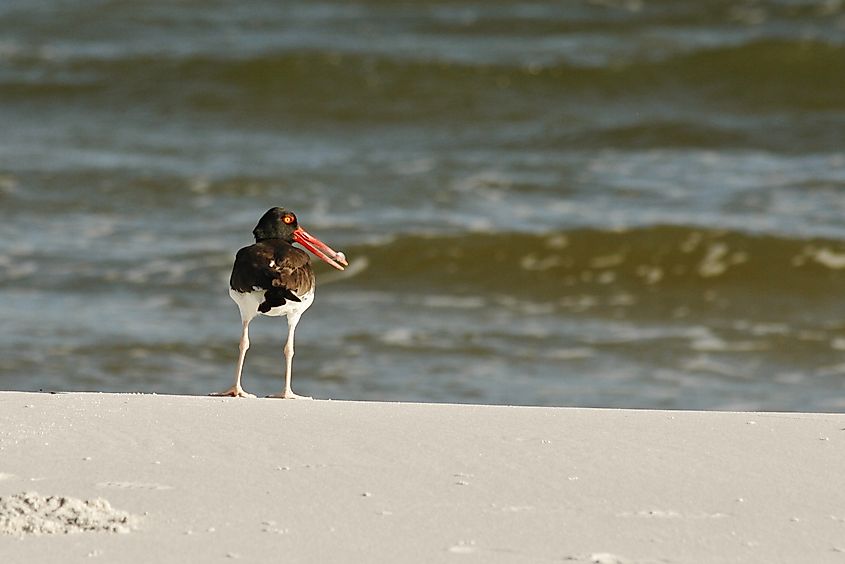
The Davis Bayou area provides a more accessible taste of coastal Mississippi's natural beauty. The Nature's Way Trail winds through old live oak forests draped in Spanish moss, and past salt marshes where great blue herons and roseate spoonbills feed. The park's boat launch makes memorable kayaking adventures through marsh grass where dolphins often hunt for mullet.
When To Visit: Plan to arrive between March to May for bird migration and pleasant weather, while September to November brings fewer crowds and excellent fishing.
Natchez Trace Parkway
This bucket list-ready 444-mile scenic parkway follows the old trail once used by Native Americans, European settlers, and the boatmen returning north after floating goods down the Mississippi River to Natchez and New Orleans. The Mississippi section of Natchez Trace Parkway runs 310 miles from the state border with Alabama to the old antebellum town of Natchez, protecting a corridor of natural and cultural sites that reveal 10,000 years of human history.
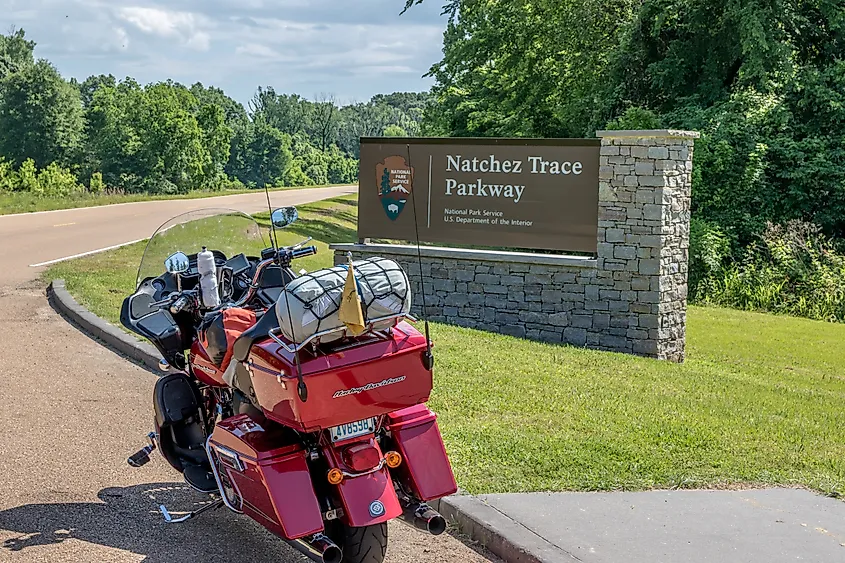
Unlike any national or state park you’ve ever visited before, the Trace serves as a linear preserve that travels through multiple ecosystems, from Appalachian foothills to Mississippi River bluffs. And thanks to the fact that it’s a road, the many natural areas along its route are some of the most accessible in Mississippi. At milepost 193, for example, the Cypress Swamp Trail features a boardwalk through a tupelo-cypress swamp where alligators sun on logs and prothonotary warblers nest in tree cavities. Jeff Busby Park at milepost 193.1 includes Little Mountain, one of Mississippi's highest points at 603 feet, with a trail leading to an overlook of the surrounding forest.
When To Visit: Visit between April and May if wildflowers and bird watching are your thing. For fall colors and ideal cycling weather, October-November are worth considering.
Clark Creek Natural Area
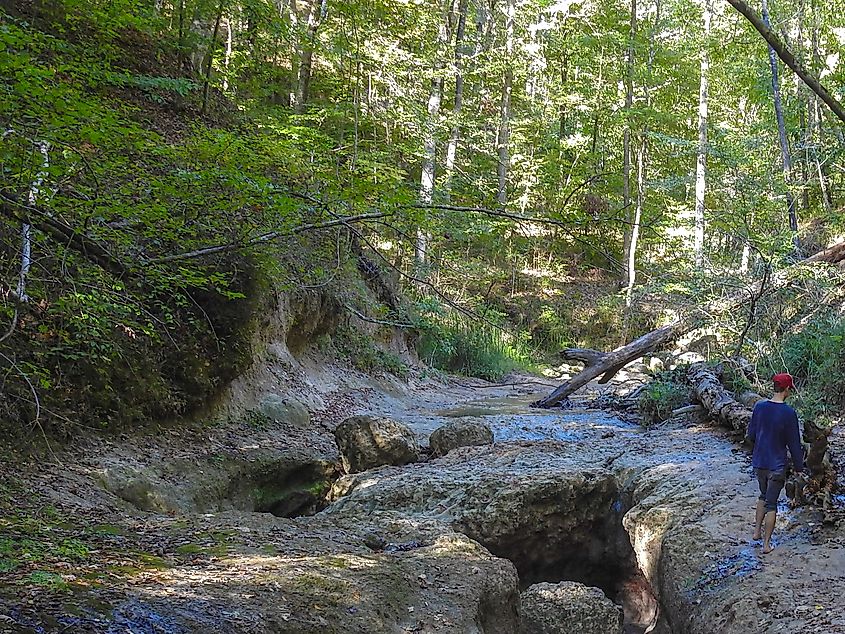
Located in the southwestern corner of Mississippi near the Louisiana border, Clark Creek Natural Area protects one of the state's most dramatic landscapes. Encompassing 700 acres of steep ravines and mixed hardwood-pine forest, the main attraction here lies in its collection of more than 50 waterfalls, making it Mississippi's undisputed waterfall capital. Carved by clear streams cutting through layers of loess soil and clay, you’ll feel like a kid in a candy store as there’s so much falling water to see.
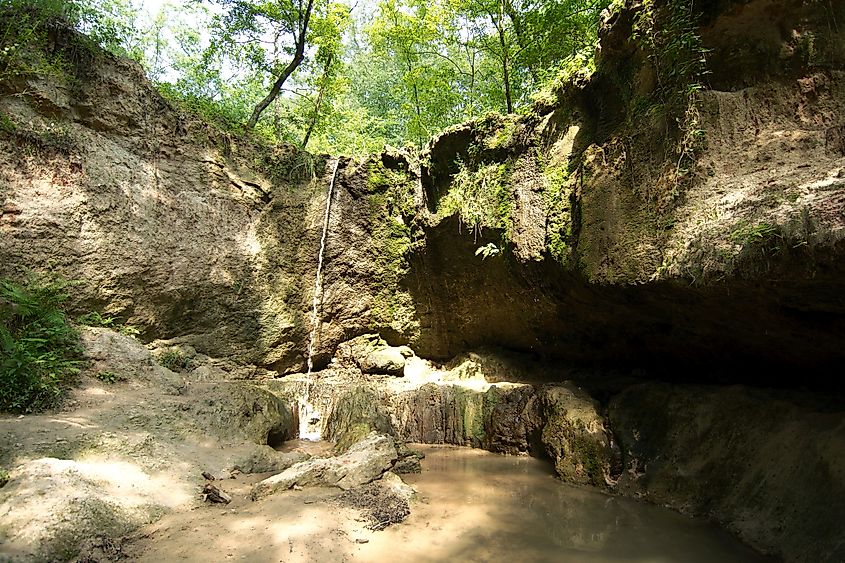
The park’s trail system is clearly marked and easy to follow and consists of two main routes: the Primitive Trail and the Improved Trail. The three-mile-long Primitive Trail leads to several major waterfalls, including the area's tallest at 30 feet, and necessitates crossing multiple streams on slippery rocks and steep climbs using rope assists installed by local volunteers. At just under two miles, the Improved Trail is the easier of the two and still reaches several scenic waterfalls.
When To Visit: February-April after winter rains are best for maximum waterfall flow; avoid summer months due to heat and low water levels.
Buccaneer State Park
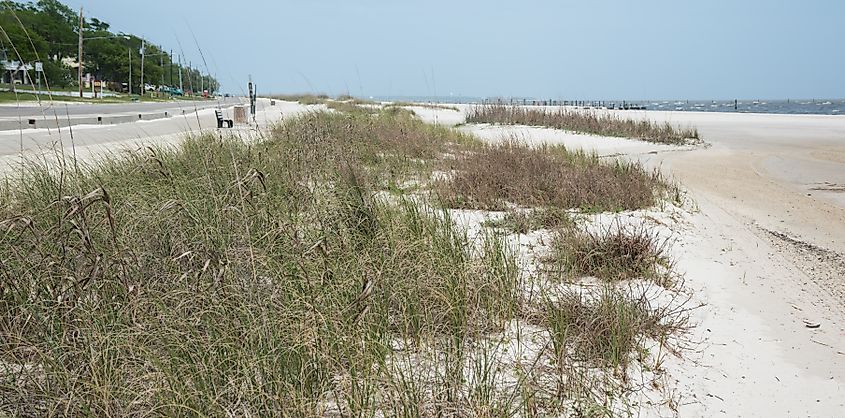
Situated on the Mississippi Gulf Coast in Waveland, Buccaneer State Park offers a fun combination of beach access and coastal protection along the Bay of St. Louis. Named for the pirates who once used these waters as hideouts, the park now provides one of the few public access points to the region’s last surviving shoreline ecosystems. Plan to hike the park's nature trail which winds through the remnants of a once vast maritime forest dominated by southern live oaks, some estimated at over 300 years old. The trail also passes through freshwater and salt marshes, each home to different wildlife, including raccoons and armadillos in the forest, to fiddler crabs and marsh periwinkles in the tidal areas.
The park's mile-long beachfront extends along the Mississippi Sound with calmer waters than the open Gulf due to the protection of the barrier islands offshore. The Buccaneer Bay Waterpark is popular with families, while the natural beach areas provide plenty of space for beachcombing and building sand castles. For fisherfolk, Pirates' Pier is a 300-foot-long fishing pier where anglers catch speckled trout, redfish, and flounder.
When To Visit: For birdwatchers, March through May is a great time to visit for the many species of migrating birds that stop by (it’s also a great time to see the park’s wildflowers). Given its southern location, October to November is a pleasant time for fishing and getting in some time on the beach.
The Final Word
From bucket list scenic parkways to untouched beaches, Mississippi's parks are full of pleasant surprises. Each not only boasts its own distinct characteristics and charm, but also offers the kind of fun things to do that you simply won’t find anywhere else in the Southern USA. For outdoor enthusiasts and nature lovers alike, Mississippi's national and state parks deliver adventures and scenery worthy of any destination in America.











